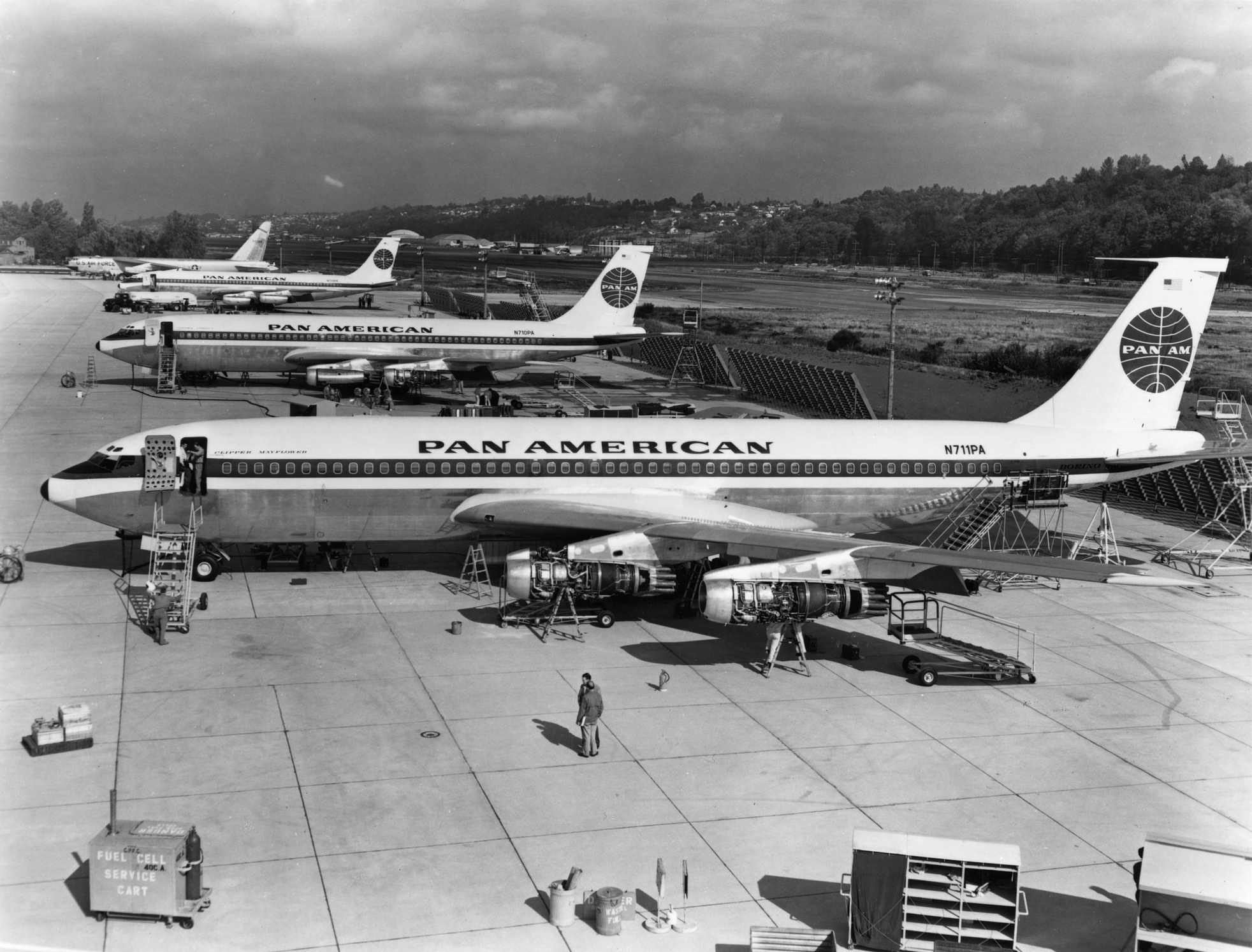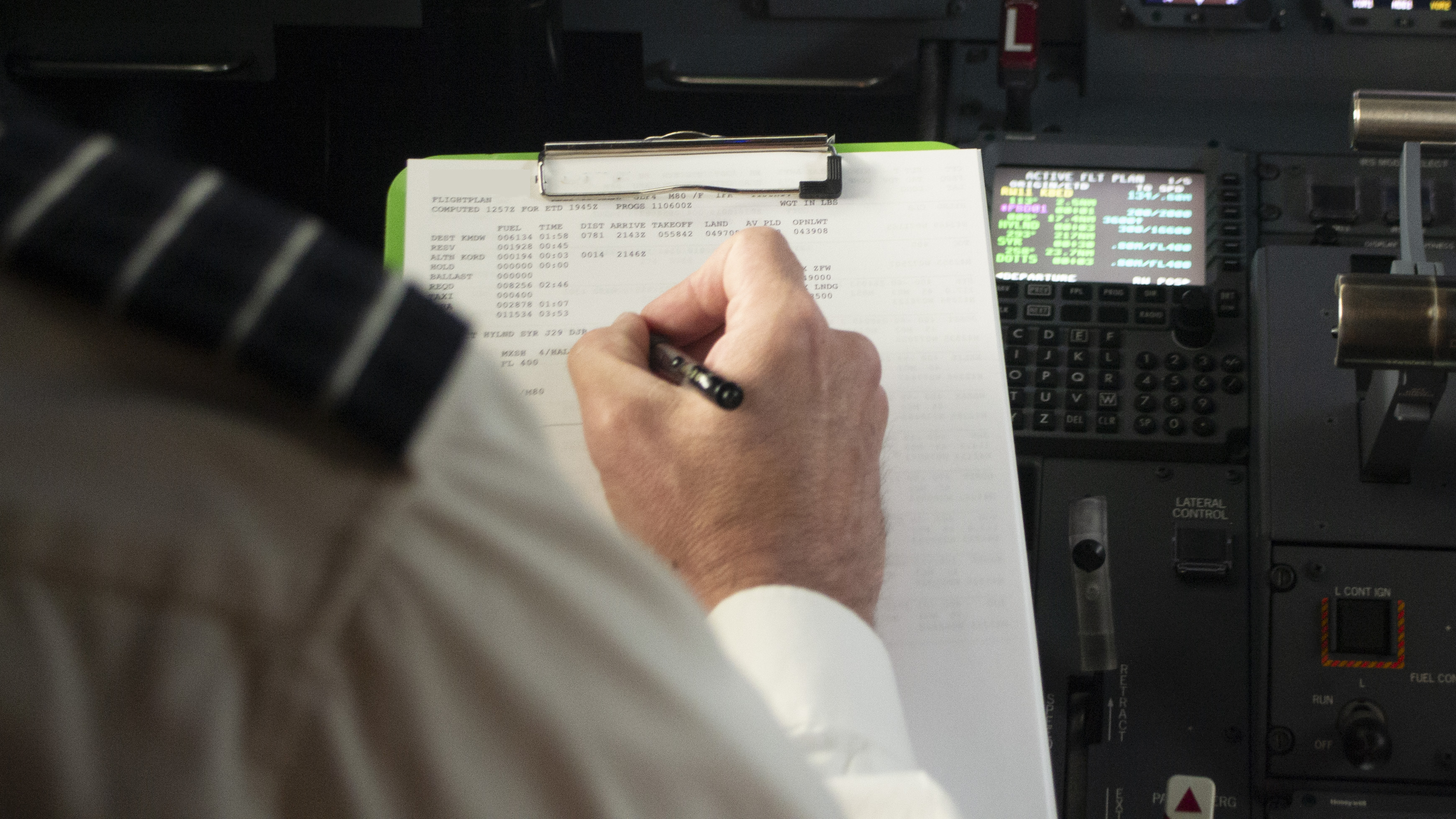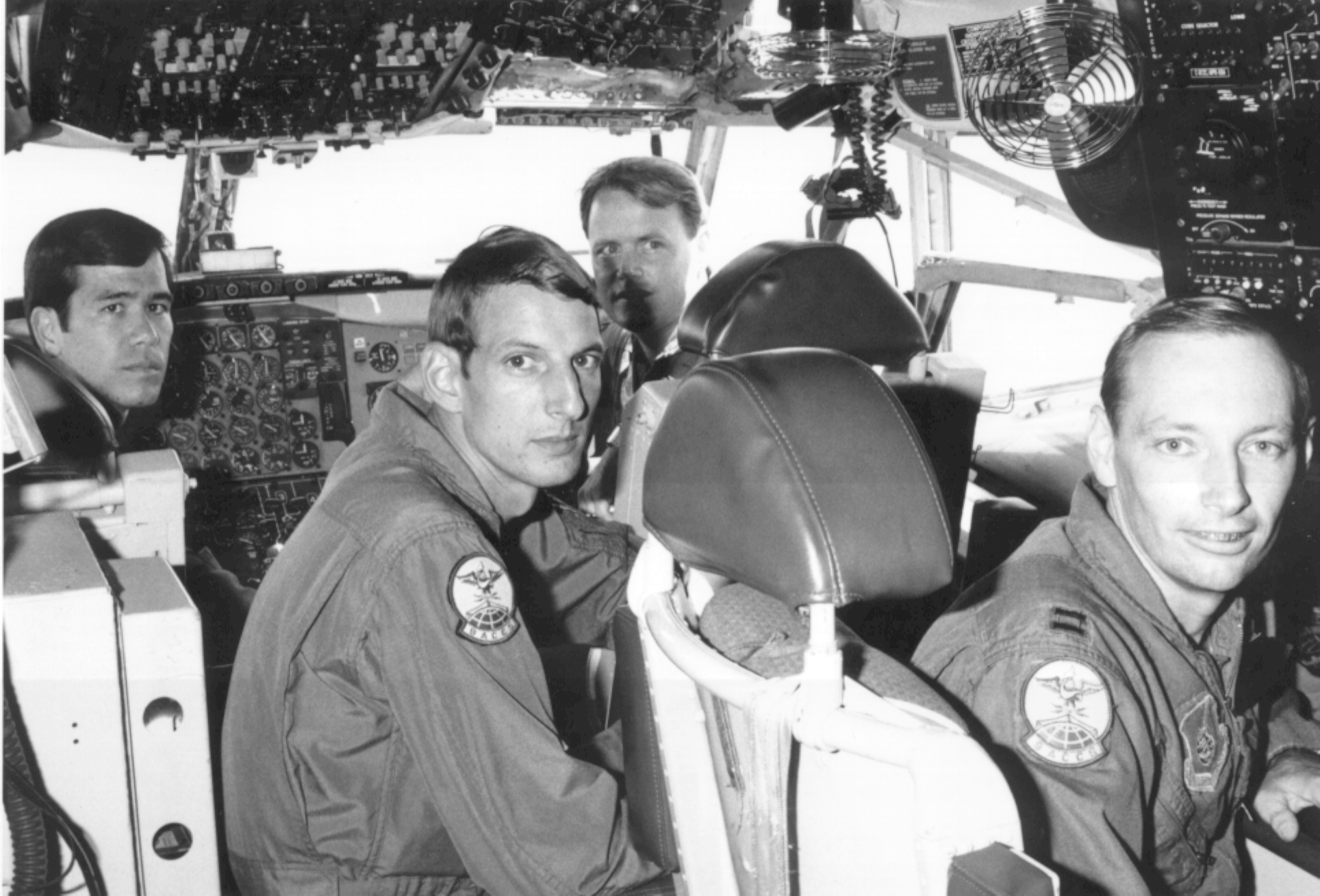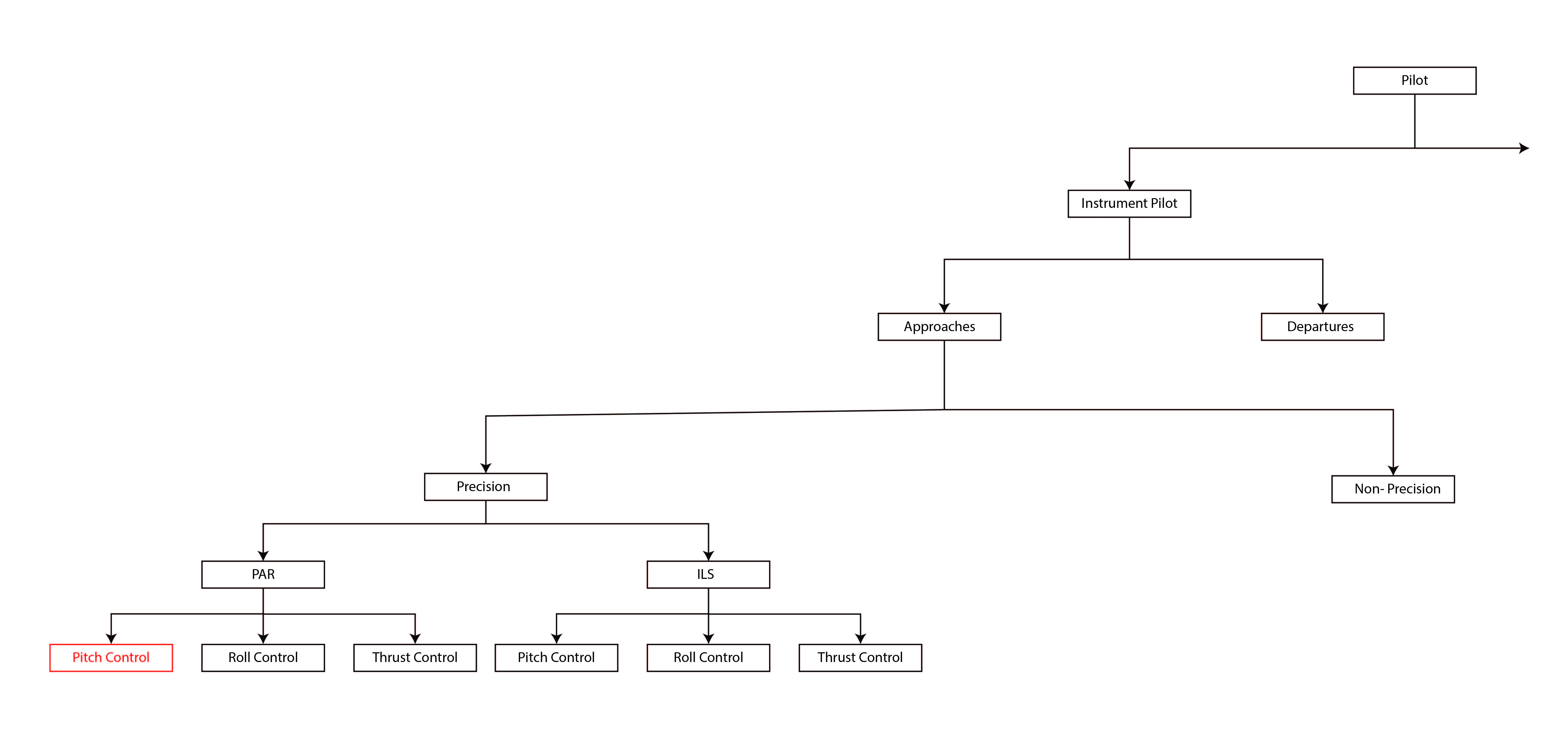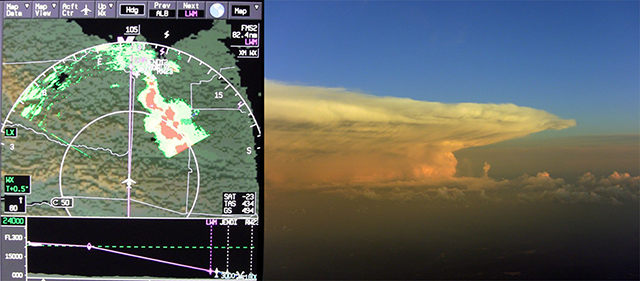There is no doubt that Crew Resource Management (CRM), once known as Cockpit Resource Management has greatly improved the way we aircrews interact and has made aviation safer. Back in the days when aircrews consisted of the captain, the first officer, a flight engineer, a navigator, a radio operator, and a host of others, the conduct of the crew was patterned off that of ocean liners. The very terms “captain” and “first officer” were coined by the founder and CEO of Pan American World Airways, Juan Trippe. In his view, his early flying boats were exactly like those regal ocean liners, and nobody would dare question the word of the captain. Even when the captain was making a mistake.
— James Albright

Updated:
2021-07-01
In the late fifties and early sixties, Pan Am was the queen of the international jet set but a series of crashes tarnished that image. In the words of writer (and former Pan Am pilot) Robert Gandt, “Pan Am was littering the islands of the Pacific with the hulks of Boeing jetliners.” He called these early generation captains “Skygods” and it was clear most of the crashes were caused by captains who wouldn’t listen to crews and crews who wouldn’t speak up. In 1974, after Pan Am crashed its thirteenth Boeing 707, the FAA threatened to shut the airline down. Pan Am got rid of the cadre of the old-style captains and fully embraced the newly created science of CRM, only to be shut down by the failure to make a profit. But along the way, we as an industry learned our lessons well.
I started flying for the U.S. Air Force in 1979 and joined the world of Boeing 707s a few years after that. My EC-135J squadron in Hawaii had one or two Skygods cut from the Pan Am mold, but they were the exceptions and not the rule. As a new copilot, I kept notes about what each of our captains expected and how their rules differed from what Boeing, the Air Force, and even what the squadron expected. In short, it was my job to make sure each captain was happy.
That was the copilot’s lot in life back then. You tried very hard to make a good impression and to get along; all in hopes of someday getting the chance to upgrade and to become one of them: a captain. That happened for me just as the airlines started hiring and all those old heads left the squadron. Our new generation of captains sat down together to collect the lessons we had learned as copilots, a postmortem of sorts, to help our copilots understand how to be better copilots so we could be better captains.
I would get a chance to repeat my apprenticeship as a copilot a few more times and a chance to counsel new copilots many more times. The ideas we came up with work for copilots, flight engineers, load masters, flight attendants, and even for captains. And they have withstood the test of time.
First, everyone needs to have empathy for everyone else. If you don’t understand what drives the captain, or if the captain doesn’t understand what drives the crew, the crew will be dysfunctional. Second, everyone needs a large dose of tact. Words broadcasted are not always received as intended and the difference can be crucial. Finally, everyone needs to know when and how to challenge any member of the crew headed in the wrong direction.

1
Empathy for the captain
Having been an aircraft commander, captain, pilot in command, left seater, and the big kahuna in various aircraft and flight operations for forty years now, one of the things I hear that grates on me the most is this: “I thought you were a ‘by the book’ pilot and yet here you are, flagrantly . . .” and then they would list the offense du jour. The common denominator of the various accusers tends to be limited or no time in the “hot seat.”
There are captains who pay little regard to the rules and will gladly stretch any limit, just for the fun of it. For these captains, press on to the section below I am calling “Guts.” But bear with me as we take a look at the motivating force behind most well intentioned captains.
First, what is the captain responsible for? In a military context it is pretty simple: the safe accomplishment of the mission. In a commercial airline or charter context it is also simple: the safe achievement of profit. Even in a private operation it is easy to explain: the safe achievement of the owner’s satisfaction. Now, how about the crew? It is the same. Now, let’s say the captain and crew fail to deliver on any of these. Who gets the blame? The captain. It is a rare occurrence that sees the crew blamed without repercussions to the captain.
Years ago, I was flying a Challenger 604 on what was a standard trip for us, from London, England (EGSS) back to Houston Intercontinental Airport, Texas (KIAH). The flight east was normally flown with a single crew and a fuel stop Boston Logan International Airport, Massachusetts (KBOS). The return flight was the reverse of that, with a crew swap in Boston because of the added flight time caused by the headwinds going west. That was a good thing on this trip, since our return from EGSS to KBOS looked to be 7.8 hours and KBOS to KIAH was 3.9 hours for a total of 11.7 hours. Our limit was 10.0 hours flight and 14.0 hours duty.
I was paired with a new copilot, let’s call him Ron. He was new to our operation but had considerable time in type as a first officer for a Part 91K operation where he had never been a captain. He seemed to know the systems and his stick and rudder skills were good. But he didn’t have enough total flight time to qualify as a pilot in command so we kept him in the right seat to build hours and experience.
When our passenger showed up for the return flight, he said that he needed to spend the night in Washington, D.C. and would return to Houston the next day instead. I assured him we could do that. I called our dispatcher who already had the news; she said the leg from KBOS to Washington Dulles, Virginia (KIAD) would be 1.8 hours. She asked if I would agree to releasing the swap crew, whom she needed for another trip. I told her I would let her know halfway across the Atlantic, after getting a better feel for the winds. I mentioned the itinerary change to the copilot, including the possibility of flying the second leg instead of airlining home from Boston. Ron was vehemently opposed to flying the second leg, saying it was unsafe to make a change at the last minute, before he had a chance to weigh the risks. He said he was surprised I would even consider it and that every captain he had ever flown with before would have instantly refused to give up the crew swap.
Coasting out of Ireland the winds were as predicted and I thought about having to justify a crew swap to the company for a total flight time of 9.6 hours. Our crew was well rested after four days off in England, we had spent a week and a half in Europe and were acclimated to the time zone, and our departure was in the morning. I also thought about the fact our crews had been pushed to the limit during the last few months and that saving the swap crew would relieve some pressure on the schedule. But I also thought about an unhappy copilot who had recently quit one job and now might be tempted to quit another.
Sitting in the right seat, Ron was unusually quiet. He made the required radio calls but otherwise seemed to prefer sulking than talking to me. Passing 20 West I noted the winds were as predicted. Ron finally spoke, “You don’t have the right to do this without my consent.”
“Are you refusing to fly a trip that falls within all company rules and regulations?” I asked.
“I don’t have a choice,” he said. “I just wanted to get that on the cockpit voice recorder.”
An hour west of Ireland the outside air temperature climbed, taking our fuel flow with it. The winds picked up from 30 knots on the nose to 50 and then to 60. The aircraft’s flight management system took spot winds and blended those into predicted winds, giving higher weight to the former but not discounting the latter. By the time we got to 30 West, our 9.6 total flight time prediction became 9.9. I called our dispatcher and said we would need to keep the swap crew in place. Ron’s mood instantly changed. In his eyes, I was no longer an unsafe captain.
Of course, the winds died, and we made it to Boston in 7.5 hours. The next crew made it to Washington in 1.5 hours, so we did a crew swap for 9.0 hours of total flight time. The flight department didn’t make a fuss over it, but I added this to my list of decision-making failures.
2
Empathy for the crew
Most of us work hard at being understanding captains and believe we get it mostly right. The trouble is that when we get it wrong, we are blinded by our good intentions. Years ago, as one of the more experienced pilots in a large flight department, the chief pilot was at his wits end with a newly hired pilot we’ll call Hank. We were flying the Challenger 604 back in the days it was the new kid on campus and a fully glass cockpit was the stuff other pilots dreamed about. Hank had thousands of hours in the older Challenger 601s which had a partial glass cockpit and a Flight Management System (FMS) that barely deserved the title. Hank adapted to the new airplane well, but his captains reported he was overly obsessed with cleaning the cabin and rarely helped preflight the cockpit. Just from the description of the problem the diagnosis was clear: he didn’t know how to program the FMS.
I scheduled myself to fly with Hank on a simple out and back flight where I knew the passengers would be punctual and wouldn’t be too upset by a delay. On the flight out, as predicted, Hank spent an inordinate amount of time with the external preflight and then polishing woodwork in the cabin. I left the FMS until I could wait no longer and then programmed it myself. Only once I was done did Hank find his way into the cockpit.
For our return flight, as we approached the aircraft, I asked him to set up the cockpit while I did the exterior, since I hadn’t done that in a while and needed the practice. By the time I got to the interior, the cockpit was left undone and Hank was picking lint out of the carpet. I said, “I saw someone I know, I’ll be back. Have the airplane ready for engine start please.” He didn’t miss a beat, “Sure thing.” Our Standard Operating Procedure (SOP) was to have the aircraft ready thirty minutes early, but I felt confident I could get the FMS programmed in less than five for our short flight home. I returned to the cockpit and found Hank rearranging seat belts in the cabin.
“We got less than five minutes, passengers will be here any minute, let’s go.” Hank sat in his seat where it appeared he had done everything except the FMS. “Get the FMS please,” I said. As he fumbled with the keypad I watched and offered, “no, that’s not going to do it.” And then, “not that either.” He kept at it, never once asking for help. A line person ran to the airplane and yelled through the door, “Your pax just pulled up!” It was unusual for them to do that for us, but with a ten dollar tip the line person was more than happy to oblige.
“Do you know how to program the FMS?” I asked.
“I guess I forgot,” he said. So, I talked him through it. After our flight I told him, “You are going to do all the FMS programming for the next month. I am going to call every captain in the flight department and tell them I will take the responsibility for any delays, but they will not be allowed to do it for you. If you ever get confused or forget something, just ask. That is how we all had to learn this. They didn’t teach this in school, there is no shame in asking.”
And that is pretty much what happened and it turned out that Hank was a very good pilot. I have used this story many times to illustrate the value of saying “I don’t know” and asking for help. But after a few years of this kind of storytelling, I realized that between Hank and I, one of us was a bit of a jerk. And it wasn’t Hank. When these high-tech FMS first came out, initial training ignored it and gave students just enough to get the airplane going and told them they would figure the rest out at their flight departments. When you are a new pilot in a large group of pilots who know what they are doing, it can be humbling having to admit ignorance. I knew that, but I guess the fact Hank was able to go more than a month before asking irked me. But, looking back, we should have had a training program already prepared, anticipating the knowledge gap from initial training to operational status. So that was the fault of our training program, not our new hire. At first, I excused myself of any blame, because that was the flight department’s shortcoming, not mine. But then I realized that as a senior pilot, I should have anticipated the need. I could have also approached Hank on that day without humiliating him in the process. “Let’s look at basic FMS programming, I need a review. I’ll talk through the process, and you can help me remember anything I’ve forgotten.” I started calling this the “do unto others” mode of training but later settled on: “put yourself in the student’s shoes first.”
3
Tact
I think any professional endeavor requires the practitioner to seek outside criticism to further develop skills and to maintain already mastered skills. That is especially true among pilots where feedback can be obvious to others while we are too busy to take note. This can be problematic if the critique is delivered poorly or accepted personally.
I was a copilot in a KC-135A tanker flying a Precision Approach Radar (PAR) approach for the first time since initial training, trying to impress upon the aircraft commander that the young second lieutenant assigned to him could be trusted to fly his airplane in the weather. A PAR is straightforward in a small aircraft. The controller gives you a heading and you turn to that heading. The controller gives you descent cues, such as “going above glide path,” and you adjust accordingly. It isn’t so simple in a large aircraft, such as the KC-135. The aircraft’s sheer size means there is a lot of momentum and corrections need to be small to prevent them becoming overcorrections. And that’s where I was on that first flight: “Correcting to glide path. On glide path. Going below glide path.” In short, I made a mess of it. I eventually straightened it all out, but instead of looking like a steady line to the runway, our glide path looked more like a sine wave of decreasing amplitude.
For the critique, the aircraft commander said, “that’s not how it’s done.” I got better, but that critique and many to follow rubbed me the wrong way. Years later, as an aircraft commander and then as an instructor, I figured out why these kinds of critiques don’t work. These critiques subconsciously equated to that of the Neidermeyer character in the movie “Animal House,” when critiquing his fraternity pledges: “You are all worthless and weak!” Am I being too sensitive?
Let’s diagram the issue from broad to specific with a diagram of where exactly pitch control falls into the big picture of instrument flying and pilot skills. The drawn diagram breaks down the PAR into pitch, roll, and thrust control. Your skill as a PAR pilot breaks down into these elements. You have a similar skill set needed for an Instrument Landing System (ILS) approach and together these made up your precision approach capabilities. Alongside this, you have similar non-precision approach skills, which are not shown for simplicity. Now we have diagramed your instrument approach skills. Further up the tree we have departure procedure skills. Combined, these are what make you an instrument pilot. Of course, there are many skills needed to be a pilot, but we have isolated the very specific skill of controlling your pitch during a PAR instrument approach.
My bungling of the PAR amounted to poor pitch control; I wasn’t adjusting the aircraft’s pitch as precisely as needed. I was simply moving the nose of the aircraft up or down in response to new trend information. I should have kept the pitch steady and made adjustments to a new value as needed. For example, if 3 degrees nose up pitch gave me a “going below glide path,” I should have picked a higher pitch like 5 degrees nose up, kept it there, and waited for new trend information. A better critique would have been to say: “You tend to overcontrol your pitch changes. You should reduce the amount of each pitch change and give it some time before making the next adjustment.”
A specific observation and recommendation versus a general comment without a suggestion ends up being more useful and less threatening. Saying, “That’s not how it’s done,” tells me that I don’t know how to fly a PAR, I don’t know the first thing about precision approaches, I am a lousy instrument pilot, and yes, I am a worthless and weak pilot. Overly dramatic? Never underestimate your subconscious’s ability to take things like this personally.
As pilots we need to be in the business of giving and accepting critique. We should of course learn to accept sincerely offered criticisms in the spirit they are offered. But we can make these critiques more effective by making them more specific. Let’s say you didn’t end up exactly on the extended centerline during your last visual approach. If I were to say, “you overshot final,” you could interpret that to mean I think you were not paying close enough attention to the wind and are a lousy visual pattern pilot. In fact, maybe you are a lousy pilot and human being! But if I said instead, “the wind pushed us across final I wonder if an earlier turn was called for,” I have removed the personal “attack.” I have narrowed our focus to one of the possible issues, the wind, and a possible solution.
4
Guts
Depending on how much mental scar tissue you have accumulated over the years as a pilot, you could be arguing that all this talk of empathy and tact is well and good, but what if the S.O.B. in the left seat is trying to fly you into a mountain? Surely there are times when you must push back and get the other crewmember to change his or her course. Yes, and that is where the real art of empathy and tact become invaluable. A CRM academician will tell you to start with inquiry, move on to advocacy, and then finally to assertion. Okay, fine and good. But what does that really mean?
Whenever I study aircraft accident reports I remind myself that with very few exceptions, no pilots start the day thinking, “today I will crash an airplane.” But many of the pilots in these reports got caught up by events and forgot things they knew that could have saved the day. A good copilot inquiry could have brought them back into the fold.
After a year as a KC-135A copilot I was paired with an aircraft commander with a reputation for rash decision making. On our first flight returning from an oceanic trip, he was tired and anxious to get home, but we had a thunderstorm parked between us and our base. He directed me to request a lower altitude so we could fly below the weather.
Step One: Inquiry. “Sir, is flying under a thunderstorm safe?” I thought that would do it, but it did not. His answer: “I’ve done this before, don’t worry about it.”
Step Two: Advocacy. “Sir, I think we have the fuel to hold and wait for the system to move, to fly upwind around it, or to divert.” His answer: “It would take an hour to fly around it and we’re not doing that.”
Step Three: Respectful assertion. “Sir, I read that the vertical downdrafts in a thunderstorm can exceed any airplane’s climb capability. I think I would rather be late than the first to arrive at the scene of an accident.”
That did it and though he was complaining the entire time and worried about what the squadron would say about our late arrival, he was pleasantly surprised that other aircraft followed our lead and we received praise for our superior judgment. I think had I started off with “your plan will lead to an accident,” he would have thought I was accusing him of being an unsafe pilot and he would have just dug in his heels and pressed on. But using the inquiry, advocacy, respectful assertion process led him to my position as if it were his own.
5
So far, next up
So far in this series of “Better,” we looked at how to become a Better Student, a Better Pilot, and now a better crewmember. Next in our series: Being a Better Captain. It is also about being a better leader, and that applies to all of us, no matter our crew position.
